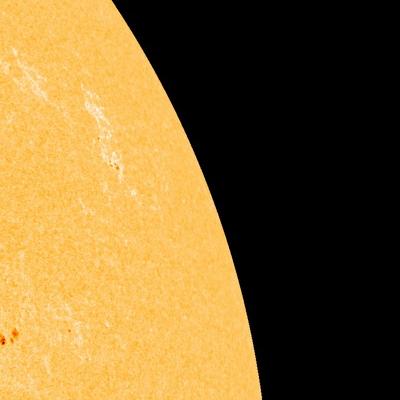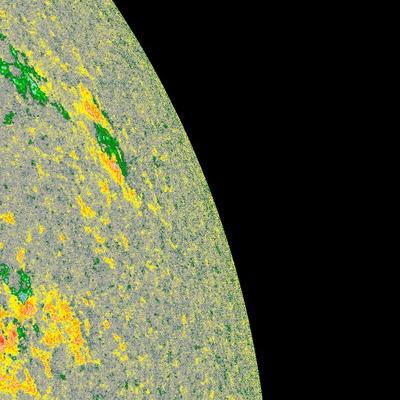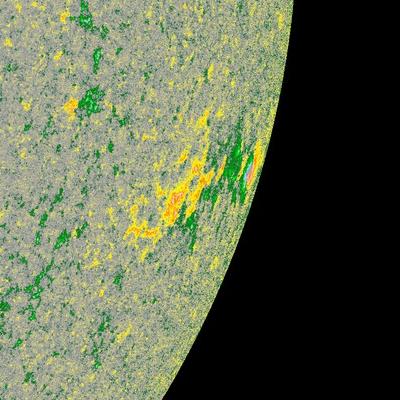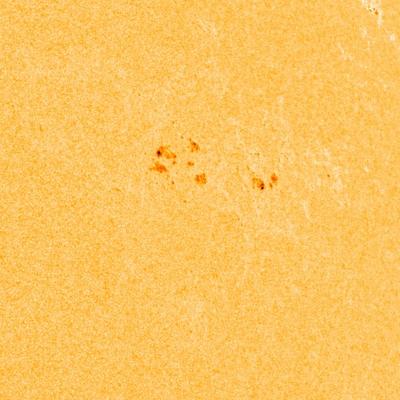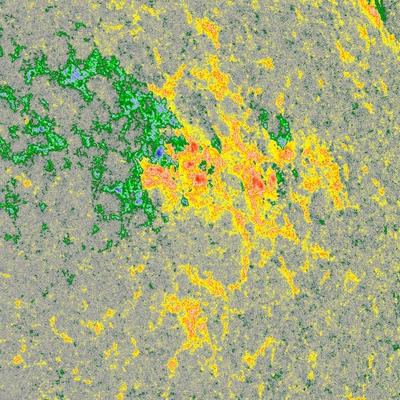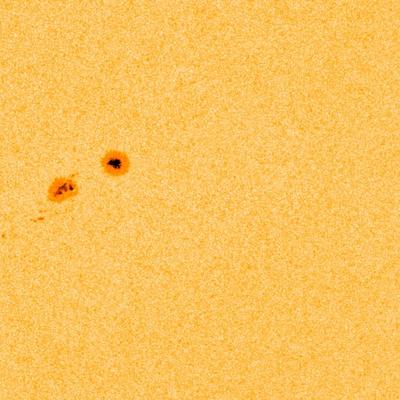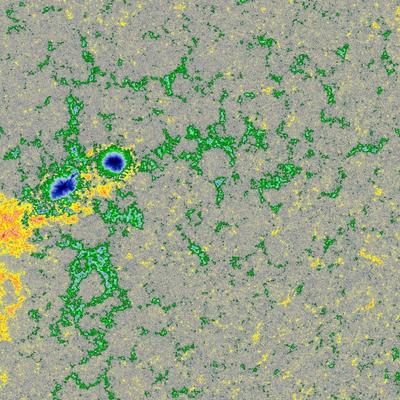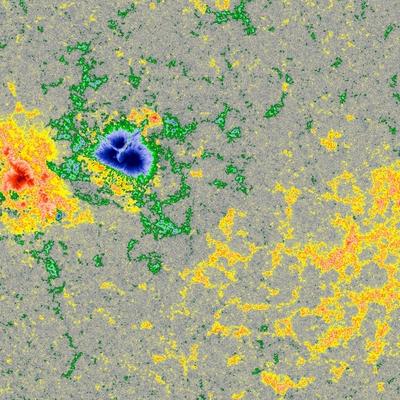Viewing archive of Friday, 3 May 2013 - Sunspot regions
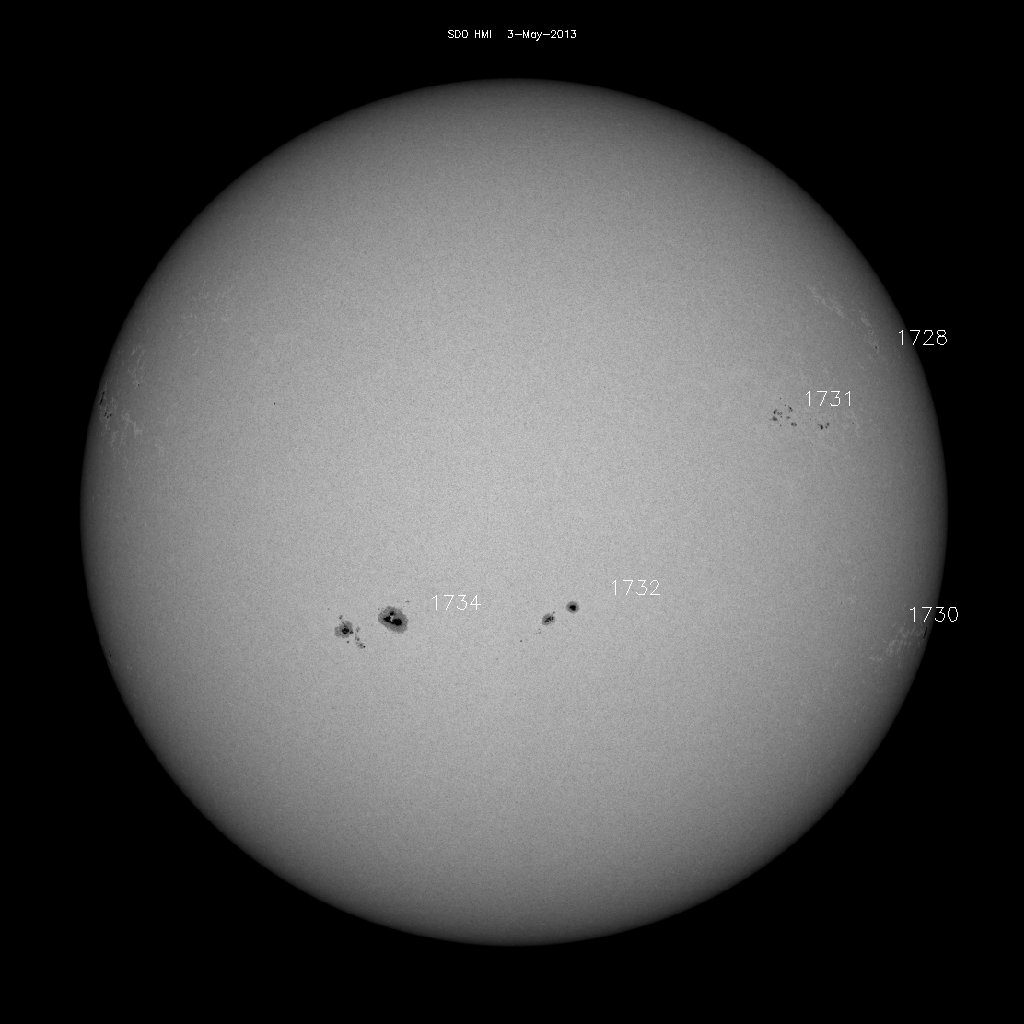
| Sunspot number | New regions | Background flux | Maximum flux | C | M |
|---|---|---|---|---|---|
| 139 37 | 3 3 | B9.29 | M8.16 | 5 | 2 |
Sunspot regions
Region 11728 |
||||
|---|---|---|---|---|
| Number of sunspots |
Size | Class Magn. | Class Spot | Location |
| 1 | 10 | AXX | N19W72 | |
Region 11730 |
||||
|---|---|---|---|---|
| Number of sunspots |
Size | Class Magn. | Class Spot | Location |
| 1 -4 | 100 30 | HSX | S16W81 | |
Solar flares on this day | ||||
| C2.49 C2.4 | ||||
Region 11731 |
||||
|---|---|---|---|---|
| Number of sunspots |
Size | Class Magn. | Class Spot | Location |
| 31 -2 | 150 -170 | EAC | N10W43 | |
Solar flares on this day | ||||
| C2.44 M1.93 | ||||
Region 11732 |
||||
|---|---|---|---|---|
| Number of sunspots |
Size | Class Magn. | Class Spot | Location |
| 7 | 160 | DSO | S17W15 | |
Region 11734 |
||||
|---|---|---|---|---|
| Number of sunspots |
Size | Class Magn. | Class Spot | Location |
| 15 9 | 550 | EKO | S19E10 | |
Solar flares on this day | ||||
| C2.47 C2.05 | ||||
Region 11737 |
||||
|---|---|---|---|---|
| Number of sunspots |
Size | Class Magn. | Class Spot | Location |
| 1 | 10 | AXX | N19E35 | |
Region 11738 |
||||
|---|---|---|---|---|
| Number of sunspots |
Size | Class Magn. | Class Spot | Location |
| 1 | 30 | HSX | N16E63 | |
Region 11739 |
||||
|---|---|---|---|---|
| Number of sunspots |
Size | Class Magn. | Class Spot | Location |
| 13 | 150 | DAC | N13E75 | |
Solar flares on this day | ||||
| M8.19 | ||||
All times in UTC
Current data suggests there is a high possibility for aurora to appear at the following high latitude regions in the near future
ReykjavikCurrent data suggests there is a moderate possibility for aurora to appear at the following high latitude regions in the near future
TórshavnOulu, Rovaniemi, Sodankylä, Utsjoki
Kirkenes, Tromsø
Murmansk
Kiruna, Luleå
Current data suggests there is a slight possibility for aurora to appear at the following high latitude regions in the near future
KuopioBergen, Trondheim
Arkhangelsk
Sundsvall, Umeå
Current data suggests there is a slight possibility for aurora to appear at the following middle latitude regions in the near future
TampereLatest news
Latest forum messages
Support SpaceWeatherLive.com!
A lot of people come to SpaceWeatherLive to follow the Sun's activity or if there is aurora to be seen, but with more traffic comes higher server costs. Consider a donation if you enjoy SpaceWeatherLive so we can keep the website online!

Latest alerts
23:30 UTC - Geomagnetic activity
Minor G1 geomagnetic storm (Kp5) Threshold Reached: 23:17 UTC
21:03 UTC - Hemispheric Power Index
The OVATION model predicts the Hemispheric Power Index to reach 75GW at 21:49 UTC
13:15 UTC - Geomagnetic activity
Minor G1 geomagnetic storm (Kp5) Threshold Reached: 13:07 UTC
12:33 UTC - Hemispheric Power Index
The OVATION model predicts the Hemispheric Power Index to reach 75GW at 13:21 UTC
00:15 UTC - Geomagnetic activity
Minor G1 geomagnetic storm (Kp5) Threshold Reached: 23:59 UTC
Space weather facts
| Last X-flare | 2025/03/28 | X1.1 |
| Last M-flare | 2025/04/01 | M2.5 |
| Last geomagnetic storm | 2025/03/27 | Kp5 (G1) |
| Spotless days | |
|---|---|
| Last spotless day | 2022/06/08 |
| Monthly mean Sunspot Number | |
|---|---|
| March 2025 | 134.2 -20.4 |
| April 2025 | 143 +8.8 |
| Last 30 days | 129.8 -16.3 |
